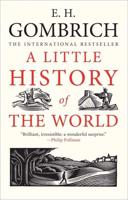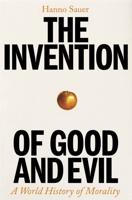Publisher's Synopsis
'Walvin synthesises this complex global history with skill and ingenuity. Freedom is beautifully written and clearly organised . . . thought-provoking, rich in detail and imbued with an emotional intelligence that pushes us to imagine what slave life meant, especially during the eighteenth and nineteenth centuries.'
J. R. Oldfield, University of Hull, Family & Community History, Vol. 22/3, October 2019
'A wide-ranging history of resistance during the Atlantic slave trade that reminds us how captives fought their miserable fates every step of the way.'
David Olusoga, BBC History Magazine
'A sobering reminder of the trade's cruelty and scope . . . but also, through resistance, rebellion and riots, the power of individual people to change the world against the odds.'
History Revealed
In this timely and very readable new work, Walvin focuses not on abolitionism or the brutality and suffering of slavery, but on resistance, the resistance of the enslaved themselves - from sabotage and absconding to full-blown uprisings - and its impact in overthrowing slavery. He also looks that whole Atlantic world, including the Spanish Empire and Brazil.
In doing so, he casts new light on one of the major shifts in Western history in the past five centuries. In the three centuries following Columbus's landfall in the Americas, slavery became a critical institution across swathes of both North and South America. It saw twelve million Africans forced onto slave ships, and had seismic consequences for Africa. It led to the transformation of the Americas and to the material enrichment of the Western world. It was also largely unquestioned. Yet within a mere seventy-five years during the nineteenth century slavery had vanished from the Americas: it declined, collapsed and was destroyed by a complexity of forces that, to this day, remains disputed, but there is no doubting that it was in large part defeated by those it had enslaved.
Slavery itself came in many shapes and sizes. It is perhaps best remembered on the plantations - though even those can deceive. Slavery varied enormously from one crop to another- sugar, tobacco, rice, coffee, cotton. And there was in addition myriad tasks for the enslaved to do, from shipboard and dockside labour, to cattlemen on the frontier, through to domestic labour and child-care duties. Slavery was, then, both ubiquitous and varied. But if all these millions of diverse, enslaved people had one thing in common it was a universal detestation of their bondage. They wanted an end to it: they wanted to be like the free people around them.
Most of these enslaved peoples did not live to see freedom. But an old freed man or woman in, say Cuba or Brazil in the 1880s, had lived through its destruction clean across the Americas. The collapse of slavery and the triumph of black freedom constitutes an extraordinary historical upheaval - and this book explains how that happened.
















